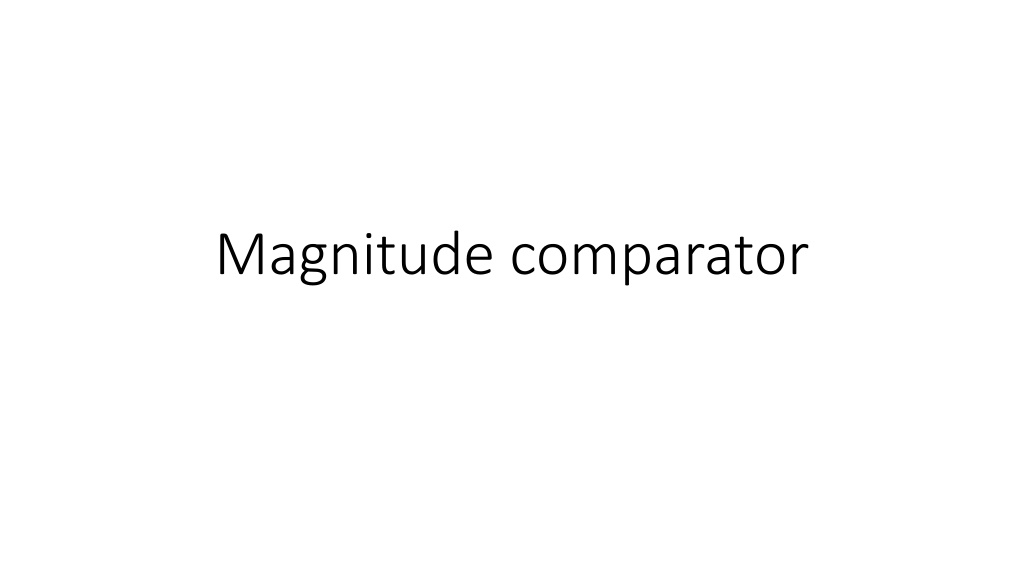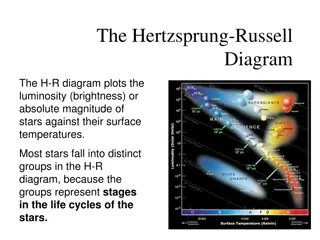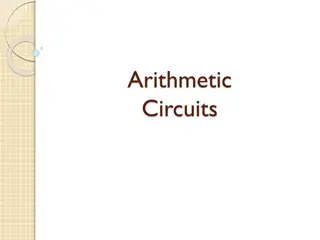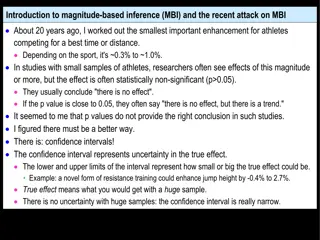Understanding Magnitude Comparators in Digital Circuits
A magnitude comparator is a crucial component in digital circuits used to compare two numbers and determine their relative magnitudes. This comparison involves checking if one number is greater than, less than, or equal to the other. By analyzing the algorithm for equality and inequality, we can grasp how these comparators function and facilitate logical decision-making in electronic systems.
Download Presentation

Please find below an Image/Link to download the presentation.
The content on the website is provided AS IS for your information and personal use only. It may not be sold, licensed, or shared on other websites without obtaining consent from the author. Download presentation by click this link. If you encounter any issues during the download, it is possible that the publisher has removed the file from their server.
E N D
Presentation Transcript
Definition The comparison of two numbers is an operation that determines whether one number is greater than, less than, or equal to the other number. A magnitude comparator is a combinational circuit that compares two numbers A and B and determines their relative magnitudes. The outcome of the comparison is specified by three binary relation that indicate whether A > B, A = B, or A < B.
On the one hand, the circuit for comparing two n -bit numbers has 22nentries in the truth table and becomes too cumbersome, even with n = 3. On the other hand, as one may suspect, a comparator circuit possesses a certain amount of regularity. Digital functions that possess an inherent well-defined regularity can usually be designed by means of an algorithm a procedure which specifies a finite set of steps
Algorithm (equality) The algorithm is a direct application of the procedure a person uses to compare the relative magnitudes of two numbers. Consider two numbers, A and B , with four digits each. Write the coefficients of the numbers in descending order of significance: A = A3 A2 A1 A0 B = B3 B2 B1 B0 Each subscripted letter represents one of the digits in the number. The two numbers are equal if all pairs of significant digits are equal: A3 = B3, A2 = B2, A1 = B1, and A0 = B0. When the numbers are binary, the digits are either 1 or 0, and the equality of each pair of bits can be expressed logically with an exclusive-NOR function as xi = AiBi + Ai Bi for i = 0, 1, 2, 3 where xi = 1 only if the pair of bits in position i are equal (i.e., if both are 1 or both are 0).
One bit Magnitude comparator A=B, A<B, A>B A=1, B=0 => A>B, A<B A=B A>B
The equality of the two numbers A and B is displayed in a combinational circuit by an output binary variable that we designate by the symbol (A = B) . This binary variable is equal to 1 if the input numbers, A and B , are equal, and is equal to 0 otherwise. For equality to exist, all xi variables must be equal to 1, a condition that dictates an AND operation of all variables: (A = B) = X3X2X1X0 The binary variable (A = B) is equal to 1 only if all pairs of digits of the two numbers are equal.
Algorithm (inequality) To determine whether A is greater or less than B , we inspect the relative magnitudes of pairs of significant digits, starting from the most significant position. If the two digits of a pair are equal, we compare the next lower significant pair of digits. The comparison continues until a pair of unequal digits is reached. If the corresponding digit of A is 1 and that of B is 0, we conclude that A >B. If the corresponding digit of A is 0 and that of B is 1, we have A < B. The sequential comparison can be expressed logically by the two Boolean functions A > B = A3B3 + x3 A 2B2 + x3x2A1B1 + x3x2x1A0B0 A < B = A3 B3 + x3A2 B2 + x3x2A1 B1 + x3x2x1A0 B0 The symbols (A >B) and(1A <B) are binary output variables that are equal to 1 when A > B and A <B, respectively.
Equation for three bits A=A2A1A0 B=B2B1B0 A==B=> x2x1x0 where x2=A2B2+A2 B2 , x1=A1B1+A1 B1 , x0=A0B0+A0 B0 A>B=> A2B2 + x2A1B1 + x2x1A0B0 A<B=> A2 B2 + x2A1 B1 + x2x1A0 B0























